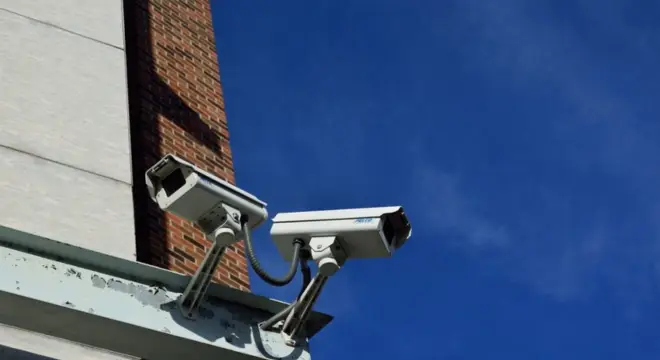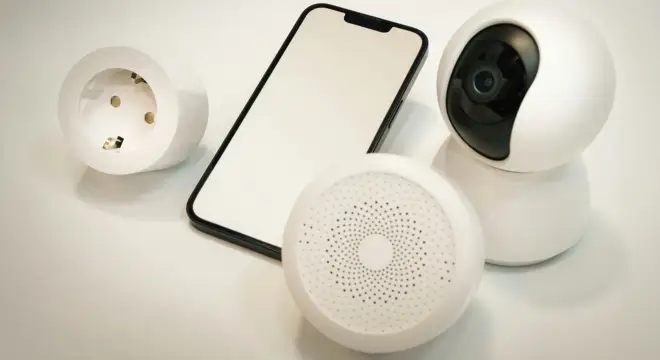10 Genius Ways to Secure Your Home While You’re Away (Even If It’s Just for a Weekend)
I’ve seen it happen more times than I can count—someone heads off on vacation, thinking their home is secure… only to come back to a broken window, missing valuables, and that awful gut-punch of “What did I forget?”
Truth is, most burglaries aren’t random. They’re planned. Burglars don’t just pick a house—they watch. They look for signs: no lights for days, packages piling up, blinds that haven’t moved. It’s these small details that tell them: “No one’s home. It’s safe to break in.”
And here’s the kicker: the majority of break-ins happen during the day, not at night. Between 10 am and 3 pm, while you’re enjoying the beach or stuck in airport layovers, someone could be walking through your front door.
That’s why I put together this list—not the generic “lock your doors” stuff you’ll find on every basic article, but real, street-smart tactics. Things former burglars admit they avoid. Tips that go beyond surface-level advice.
Because if you’re going to step away from home, you deserve to do it with peace of mind—not paranoia.
Let’s make sure your house doesn’t become a target.
What Burglars Actually Look For (And When They Strike)
Most people imagine burglars sneaking around at night in black hoodies. But that’s a movie version. In real life, most break-ins happen when you’re at work, running errands, or away on vacation — broad daylight, between 10 am and 3 pm.
Burglars aren’t looking for a fight. They’re looking for easy, quiet access with low risk. That’s why they prefer homes that look empty but don’t scream security.
So what do they scan for? Based on actual reports and confessions from former burglars:
- No car in the driveway for days
- Packages or mail piling up at the door
- Blinds always shut or always open (both are red flags)
- Dark windows at night — no lights on, no movement
- Overgrown grass or unshoveled snow
- No signs of cameras, alarms, or even a dog
A former burglar told The Sun: “If I saw a house with no car, bins out late, and no lights for two days, I’d assume they’re gone. I’d pass if I heard a dog or saw a camera.”
So when you’re planning that trip, think like a burglar for a second. Would you break into your own house?
Because if the signs are there, they’ll notice. That’s their job.
Lock the Obvious (Because That’s Where They Start)
Here’s something most people don’t want to hear: Burglars almost always try the front or back door first. No climbing through tiny bathroom windows. No Mission Impossible stuff.
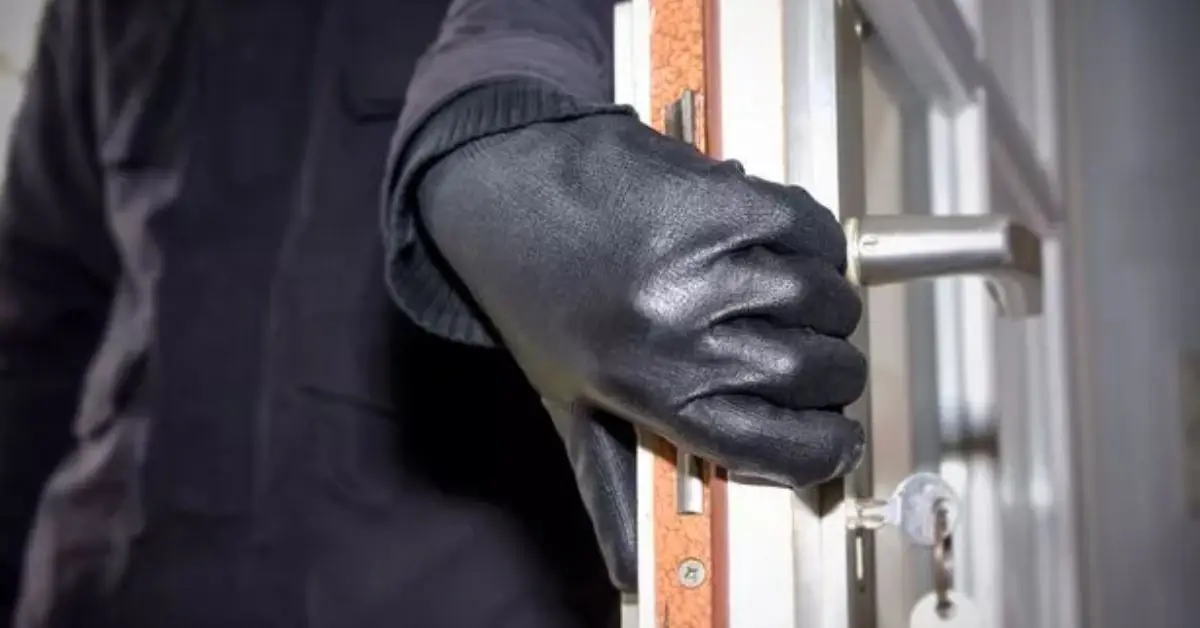
Why? Because in way too many homes, the main door is either unlocked, weak, or barely secured. And when that fails, they try the ground-floor windows—especially the ones hidden behind shrubs or fences.
If your door can be kicked in or jimmied open with a screwdriver, it’s not really “locked.” Here’s what you can do instead:
- Reinforce your door frame with a heavy-duty strike plate and 3-inch screws. (Standard ones are too short—burglars know this.)
- Install a deadbolt with a minimum 1-inch throw.
- Use door hinge pins on outward-swinging doors (so they can’t be removed from outside).
- Add a door brace or bar inside if you’re leaving for a long trip.
- For sliding doors/windows: Drop a wooden dowel or metal rod into the track. (Simple but surprisingly effective.)
Also — double check your basement windows and those little side garage doors. Those are often ignored, and that’s exactly what burglars count on.
It’s not about spending thousands on high-end systems. It’s about slowing them down and making your house look like too much work.
Make It Look Like You Never Left
Burglars don’t want to guess. They want to be sure no one’s home before they try anything. And the easiest way to stop them? Make them doubt.
If your house feels “lived in,” they’ll likely move on.
This isn’t just about leaving a light on. That’s too obvious, and frankly, most thieves know better. The trick is to create random movement — like someone’s inside watching TV, moving around, maybe even cooking dinner.
Here’s how to fake it well:
- Smart plugs or timers on lights and lamps. But set them to go on/off at slightly different times each day — not the same schedule every night.
- TV or radio noise on a smart speaker or plug. A glowing screen in the living room at 9:30pm? That’s convincing.
- Smart blinds that open during the day and close at night — huge if you live on a busy street.
- If you have Alexa or Google Assistant, schedule routines: “Turn on hallway light at sunset, turn off at 10pm.”
One user on Reddit’s r/AskUK said: “I leave a light on in one room, TV on low volume in another, and my neighbor parks in my driveway. My house doesn’t look empty — ever.”
And don’t forget: if your home normally has life and noise, total silence stands out. Even a motion-triggered hallway light is enough to make someone hesitate.
Think of it this way: burglars want guarantees. Your job is to make them second-guess.
Let Them Know They’re Being Watched
Sometimes, it’s not about what you actually have—it’s about what they think you have.
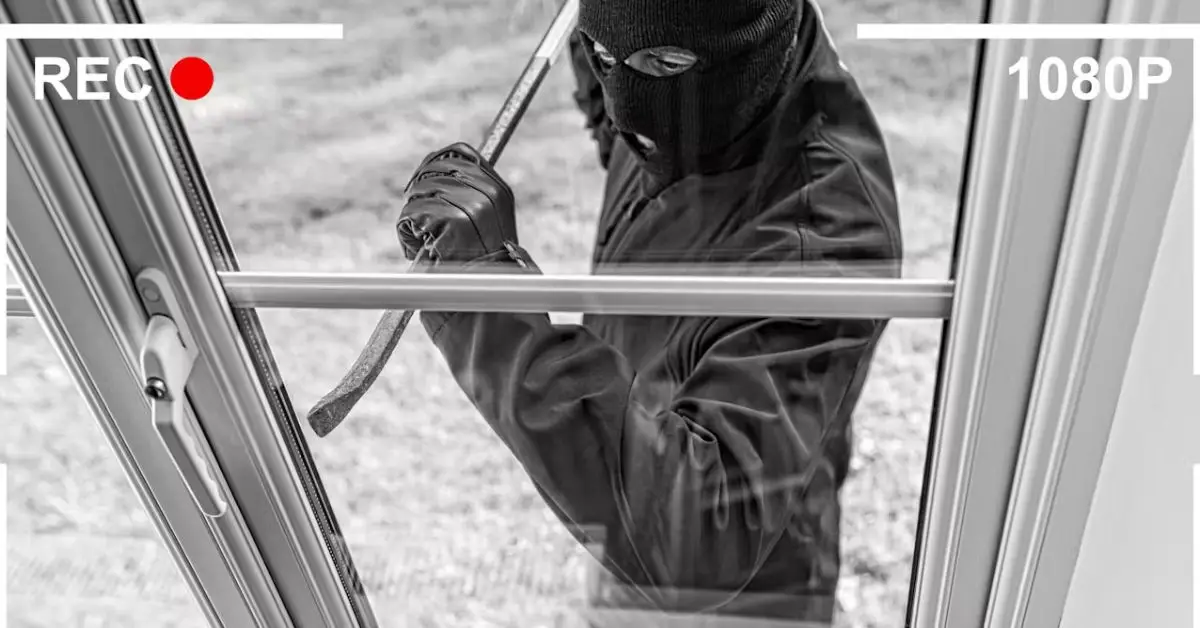
Burglars are opportunists. If they spot cameras, alarms, or warning signs, most won’t even bother checking if they’re real. They’ll move on to the next house that doesn’t scream, “I’m protected.”
But there’s a catch: they can tell the difference between real and fake. A dusty dummy camera or a faded sticker from 2014 won’t fool anyone anymore.
Here’s how to make it work:
- Video doorbells like Ring or Google Nest—not only record movement but also give you instant phone alerts.
- Motion-activated security cameras above entrances, garage, or backyard. Don’t hide them. Visibility is the point.
- Window decals and yard signs from a real security company (even if you use a DIY system like SimpliSafe or Wyze).
- Alarm system placards by the main door and mailbox — burglars check for these from the sidewalk.
Architectural Digest broke it down well: “Homes with clear signs of surveillance—cameras, window stickers, or alarm panels—are often skipped altogether.”
If you’re on a budget, start with one or two real devices and add dummy signs to reinforce the image. But always make sure at least something works.
Also, don’t underestimate the value of a “Beware of Dog” sign—even if you don’t have one. Many burglars admit they won’t risk it.
Want to go deeper on must-do safety upgrades? Check out these 9 home security tips every homeowner should know before it’s too late — especially tip #4, it’s a game-changer most people forget.
You’re not just securing your home—you’re sending a clear message: “You’re being watched. Don’t even try.”
Don’t Let the Outside Give You Away
Your house might be locked up tight. You might even have cameras blinking at the door.
But if your mailbox is stuffed, the grass hasn’t been mowed in a week, and Amazon packages are baking on your porch?
That’s a neon sign for burglars: “Nobody’s home.”
They’re not just checking your door. They’re walking or driving by, looking for patterns—and if it looks like no one’s around, it doesn’t matter how secure your locks are.
Here’s what to lock down before you leave:
- Pause mail delivery or ask a trusted neighbor to collect it daily.
- Reschedule any online orders or set them to deliver to a locker/Amazon Hub instead.
- Hire someone (or ask a friend) to mow the lawn or shovel snow if you’ll be gone more than a week.
- Put one trash bin out and ask someone to bring it in later — looks like someone’s still around.
Also, check your smart home devices—doorbells, cameras, and thermostats. If the Wi-Fi goes out or devices reset while you’re gone, that silence can be just as loud.
Also, pests and critters can sneak in while you’re gone — and you don’t want to come back to a bat problem. Here’s how to stop bats from invading your home using 5 easy DIY fixes.
The One Door You Always Forget (That They Never Do)
Most people double-check the front door, maybe even reinforce it. But ask any experienced burglar what they try next, and you’ll hear it every time: “The garage. Or the side door. Always.”
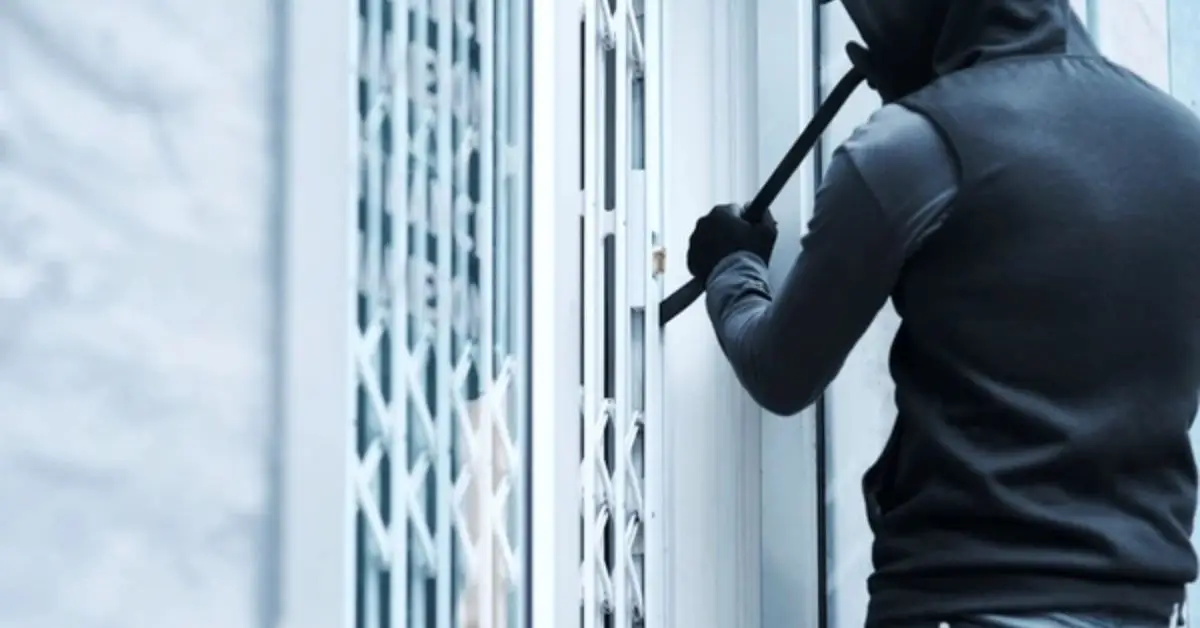
Why? Because garages are weakly secured in most homes. And side or back doors? Usually hidden from street view. That means more time, less risk, and a wide-open chance if you’ve overlooked them.
If your garage has an automatic opener, here’s what burglars know:
- They can force the door slightly open and use a coat hanger to pull the emergency release cord. It takes under 10 seconds if unprotected.
- Many people don’t lock the interior door that connects the garage to the house. That’s a gift.
- Older garage keypads? Easy to guess or reset.
- Spare keys under flower pots or inside unlocked sheds? Child’s play.
Here’s what to do before you leave:
- Disable or unplug your garage opener entirely for the trip.
- Install a garage door deadbolt or use a simple slide lock on the inside.
- Zip-tie the emergency release (so it can’t be pulled from outside).
- Lock the interior garage door like it’s a front entrance—because it is.
And if you store tools or ladders outside? Lock them up or bring them in. Don’t give them break-in gear on a silver platter.
Even the side gate or basement door—if it’s hidden, it’s vulnerable.
Burglars love shortcuts. Don’t give them one.
What’s one part of your home you’ve never thought to lock before? Be honest
If They Get In, Make Sure They Get Nothing
Let’s be honest: no security setup is 100% break-in proof. But even if someone manages to get inside, you still have a big say in how much they walk away with.
That’s where interior security comes in. Most burglars are in and out in under 10 minutes. They go for the obvious stuff: jewelry boxes, sock drawers, home office cash, and unlocked closets.
So your job is simple: hide it, lock it, or make it hard to find.
Here’s what works:
- Smart locks or keypad locks on home office doors, bedroom closets, or storage rooms. You can buy these for $40–$70 and install in minutes.
- Bolt-down safes inside cabinets or hidden in closets. Don’t just tuck one under the bed — that’s the first place they check.
- Diversion safes — fake books, wall clocks, even canned goods that hide keys or cash. Sounds gimmicky, but it works.
- Store electronics or valuables in less obvious places (not the master bedroom or living room). Think laundry cabinets, kids’ rooms, etc.
Also: label things vaguely. A bin marked “Receipts” might contain family heirlooms. A box marked “Xmas Lights” might be the perfect place to hide your spare emergency cash.
Burglars don’t have time to play detective. If it’s not easy to find, it’s not worth their risk.
What’s the smartest hiding spot you’ve come up with? Share it — no exact addresses, promise.
Your Best Security? A Nosey Neighbor
Let’s be real—no camera or alarm beats someone who knows your house, your habits, and what shouldn’t be happening when you’re gone.
That’s why one of the smartest things you can do before leaving town isn’t about tech—it’s about people.
Good neighbors are underrated home security. They’re the ones who’ll notice if a random car pulls up, if your lights didn’t come on like they usually do, or if someone’s poking around your side gate.
Here’s how to set that up before your trip:
- Tell a trusted neighbor or two that you’ll be away—and ask them to casually keep an eye out.
- Give them your contact info, and maybe a spare key (or at least access to someone who has it).
- Ask them to move your trash bins, park in your driveway, or close blinds from time to time—those little changes create movement.
- If you live in an active neighborhood group (like on WhatsApp, Facebook, or Nextdoor), post a heads-up. No details about your full trip—just enough so people know to stay alert.
Reolink recommends working with neighbors because: “Criminals often test neighborhoods first. A close-knit street where people watch out for each other is a serious deterrent.”
Some areas also have local police vacation checks, where officers will occasionally drive by and check for suspicious activity. Look up your town’s program—many offer it free.
And if your area doesn’t have a neighborhood watch? Now might be the perfect time to suggest one.
Ever had a neighbor catch something suspicious while you were away? Tell us what happened
Think Before You Post — Burglars Are Watching, Too
You might not realize it, but one of the easiest ways to get your home targeted has nothing to do with doors or locks.
It’s your phone. More specifically — what you post on it.
We’ve all seen it:
- “ Off to Bali for 10 days!”
- “Finally out of the cold! See you next week!”
Even a photo of your boarding pass or hotel room can tell the wrong people that your house is empty — right now.
And burglars do look. Some follow local hashtags. Others scroll through Facebook or Instagram searching for “vacation,” “honeymoon,” or “out of town.” If your posts are public, you’re handing them a free window of opportunity.
Here’s how to stay smart:
- Never post travel plans publicly until you’re back home. Share the beach photos later — they’ll still look just as good.
- Turn off location tagging on Instagram and Facebook. Even if you don’t post, tagging can give your position away.
- Limit who sees your Stories — especially on apps like Snapchat, where location and time stamps are visible.
- Watch what your kids or family members share, too. One accidental post can undo all your prep.
MoneyWeek warns: “Social media has become one of the easiest ways criminals monitor targets. A single post can trigger a break-in.”
Even smart-home tech is vulnerable if your accounts aren’t secure:
- Set up two-factor authentication on your security apps (Ring, Nest, etc.)
- Use strong, unique passwords — not your dog’s name or “Home1234”
- Log out of devices before leaving if you’re unsure
Burglars are lazy, but they’re not dumb. If your online life tells them, “This house is empty for a week,” they’ll listen.
Ever caught yourself almost posting your location while on vacation? What stopped you?
Lock Down More Than Just the Doors
You’ve secured your windows, set your smart lights, even looped in the neighbor. But what about your water heater? Or that old surge protector under your desk?
It’s easy to focus so much on burglars that we forget the silent damage that can happen while you’re away — power surges, water leaks, frozen pipes, or even a triggered fire alarm with no one home to respond.
A good trip isn’t just about preventing break-ins — it’s also about not coming home to a flooded basement or fried electronics.
Here’s what to double-check before you leave:
- Turn off the main water valve, or at least to toilets, washing machines, and dishwashers.
- Unplug unnecessary electronics like TVs, routers, coffee machines, etc. They still draw power — and they’re vulnerable during storms.
Adjust your thermostat (not off completely):
- In summer, set it to 80–85°F
- In winter, no lower than 55°F to avoid frozen pipes
- Test smoke and CO detectors, and make sure backup batteries are working
- Check sump pumps and water sensors if your basement is prone to leaks
If you use smart tech:
- Check Wi-Fi backups, and set up alerts in case anything goes offline
- Give a neighbor app access or backup contact, in case an alarm goes off
Burglars aren’t the only threat when you’re away. Sometimes the real trouble starts inside.
Planning a home project before your trip? Make sure you’re not unknowingly violating local rules. These 6 surprising home upgrades that need a license (yes, even painting) might surprise you.
The No-Nonsense Checklist Before You Leave Town
All set to head out? Before you lock the door, run through this checklist. It’s not just about safety — it’s about peace of mind.
Secure Entrances
- Lock all doors and windows (including basement, garage, and upstairs)
- Reinforce doors with deadbolts and strike plates
- Use dowels in sliding windows and patio doors
- Lock interior garage door and add slide lock to garage itself
Fake Like You’re Home
- Set lights and TVs on smart timers with varied schedules
- Program blinds (or ask a neighbor to adjust them)
- Leave a car in the driveway if possible
Show You’re Protected
- Turn on outdoor motion-sensor lights
- Activate cameras and test phone notifications
- Display alarm signs or window decals
Control the Clues
- Pause mail or ask someone to collect it daily
- Reschedule deliveries or send to a secure pickup point
- Arrange for lawn care or snow removal
Secure the Inside
- Lock valuables in a safe (preferably bolted down)
- Use smart or keypad locks on sensitive interior rooms
- Store small valuables in unexpected spots
Loop in People You Trust
- Inform a neighbor or friend about your travel dates
- Share contact info and spare key access (if safe)
- Join or alert your local neighborhood watch
Stay Quiet Online
- Avoid posting real-time trip updates
- Turn off location tags on social media
- Ensure kids or relatives don’t accidentally reveal plans
Prep Your Systems
- Turn off main water line or appliance valves
- Unplug electronics not in use
- Test alarms, detectors, and sump pumps
- Set thermostat to energy-saving safe mode
Pro Tip: Save this as a note on your phone or stick it near your suitcase. Check it every time you leave for more than 24 hours. The 10 minutes it takes could save you thousands — and a whole lot of regret.
Before You Go — One Last Thing to Remember
You’ve done the prep, checked every lock, and maybe even saved this list for next time. That’s good. That means you care — and you’re ahead of most people already.
But here’s the truth: home security isn’t just about gadgets or to-do lists.
It’s about buying peace of mind. The kind that lets you enjoy your flight, your vacation, your family — without that nagging feeling in the back of your head.
And while we can’t predict everything, we can stack the odds in our favor. Every small step you take — from locking that side gate to unplugging a coffee maker — adds up. It sends a message to anyone watching:
“This house isn’t an easy target. Move on.”
So whether you’re heading out for the weekend or flying off for weeks, remember:
- It’s not about being paranoid.
- It’s about being prepared.
Stay smart. Travel safe. And come home to everything exactly the way you left it.
Your turn — did this list miss anything you always do before leaving town. Drop your tip below. You might help someone else avoid a break-in.
Liked this guide? We’ve got more.
Explore expert-backed home safety tips, smart living tricks, and must-know maintenance hacks — all in one place. Stay ahead, stay protected.
Browse more guides on Build Like New
Disclaimer: This guide is for informational purposes only. Always consult a licensed security professional or local authorities for personalized home safety recommendations. Build Like New is not liable for any actions taken based on this content.

